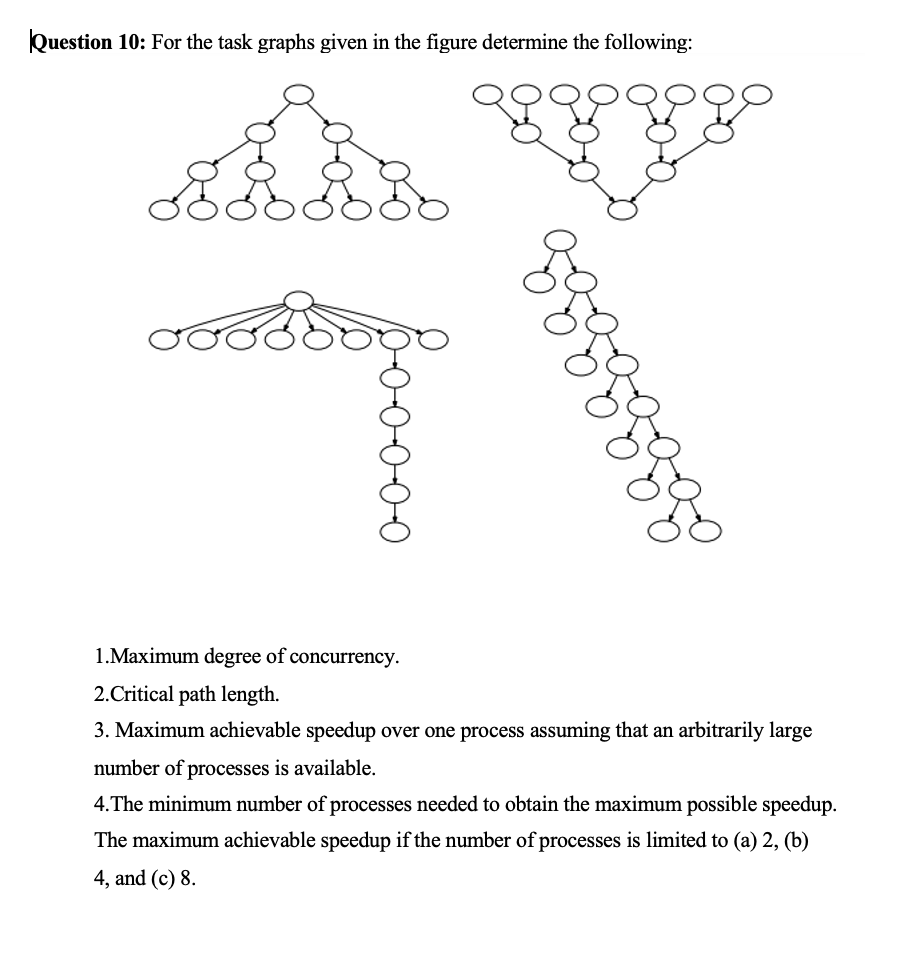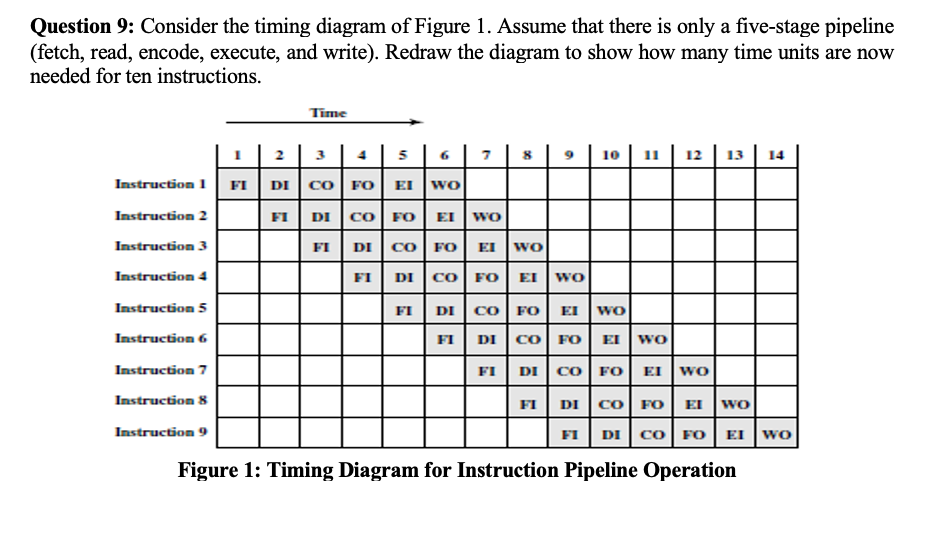Question 8: Consider a 5-stage instruction execution in which, Instruction fetch = ALU operation = Data memory access = 250 ps; and Register read = Register write = 200 ps. Find out the speedup factor for pipelined execution.
ANSWER THE QUSTIONS THAT IS WRITEN OR ON THE PICTURE PLEASE
Question 6: Suppose in a program there are 120 instructions, and 6 stages are required for each instruction to be processed. Time required in each stage is equivalent to 1 ps. Calculate the speedup of pipeline parallel processing.
Question 7: Suppose in a program there are 300 instructions, and 6 stages are required for each instruction to be processed. Time required in each stage is equivalent to 1 ps. Calculate the efficiency of pipeline parallel processing.
Question 8: Consider a 5-stage instruction execution in which, Instruction fetch = ALU operation = Data memory access = 250 ps; and Register read = Register write = 200 ps. Find out the speedup factor for pipelined execution.


Trending now
This is a popular solution!
Step by step
Solved in 2 steps


